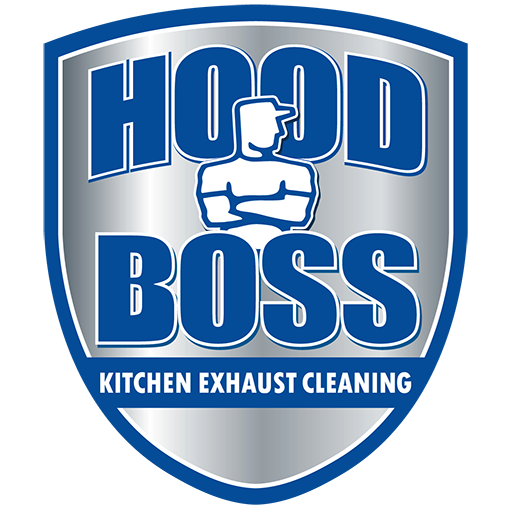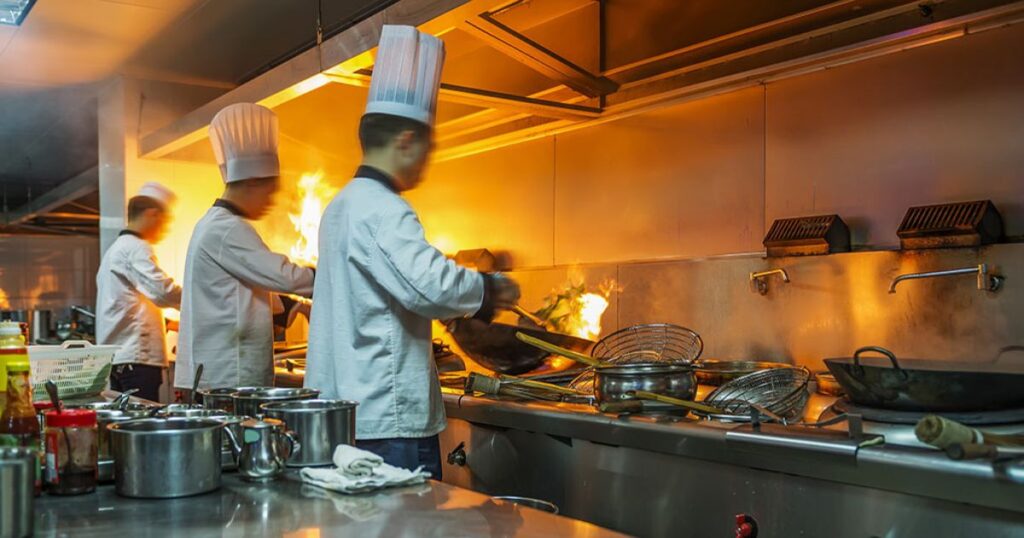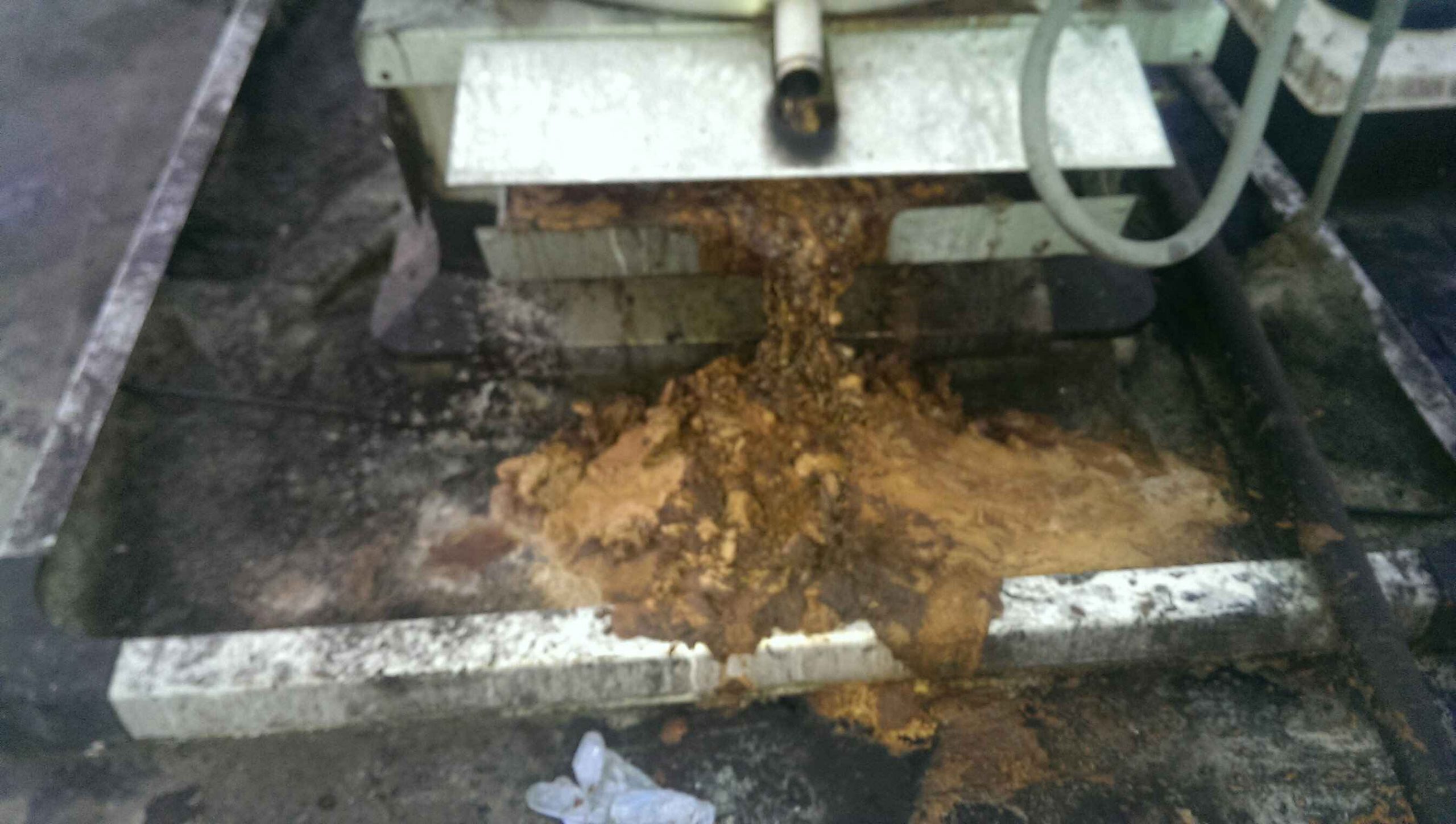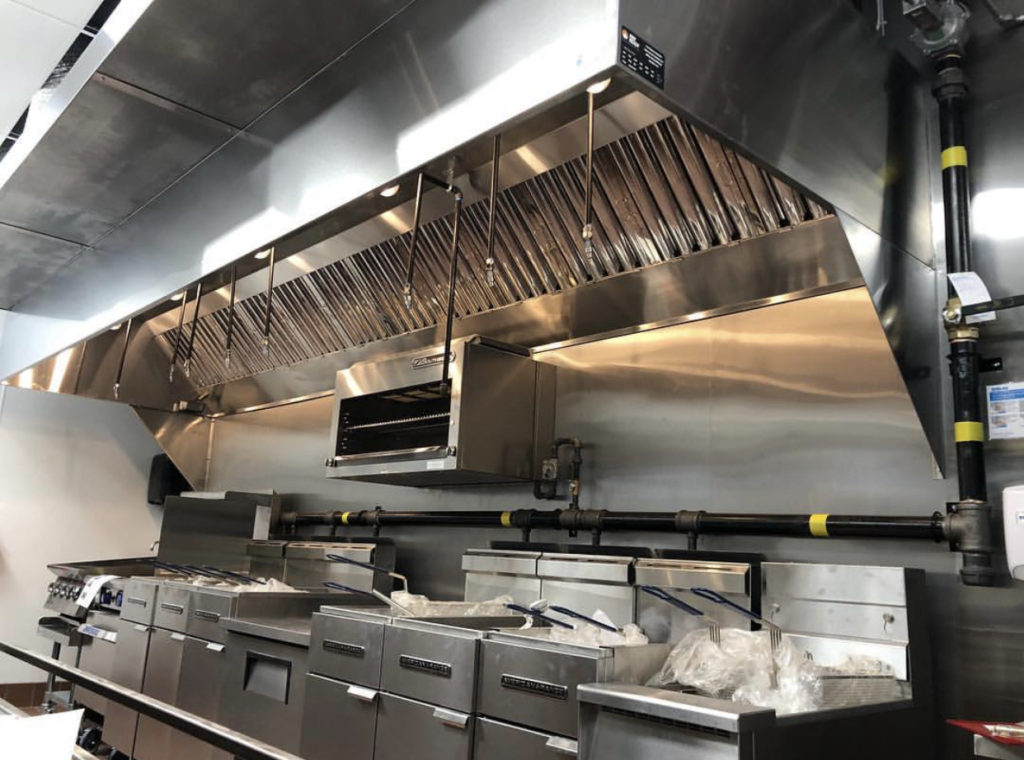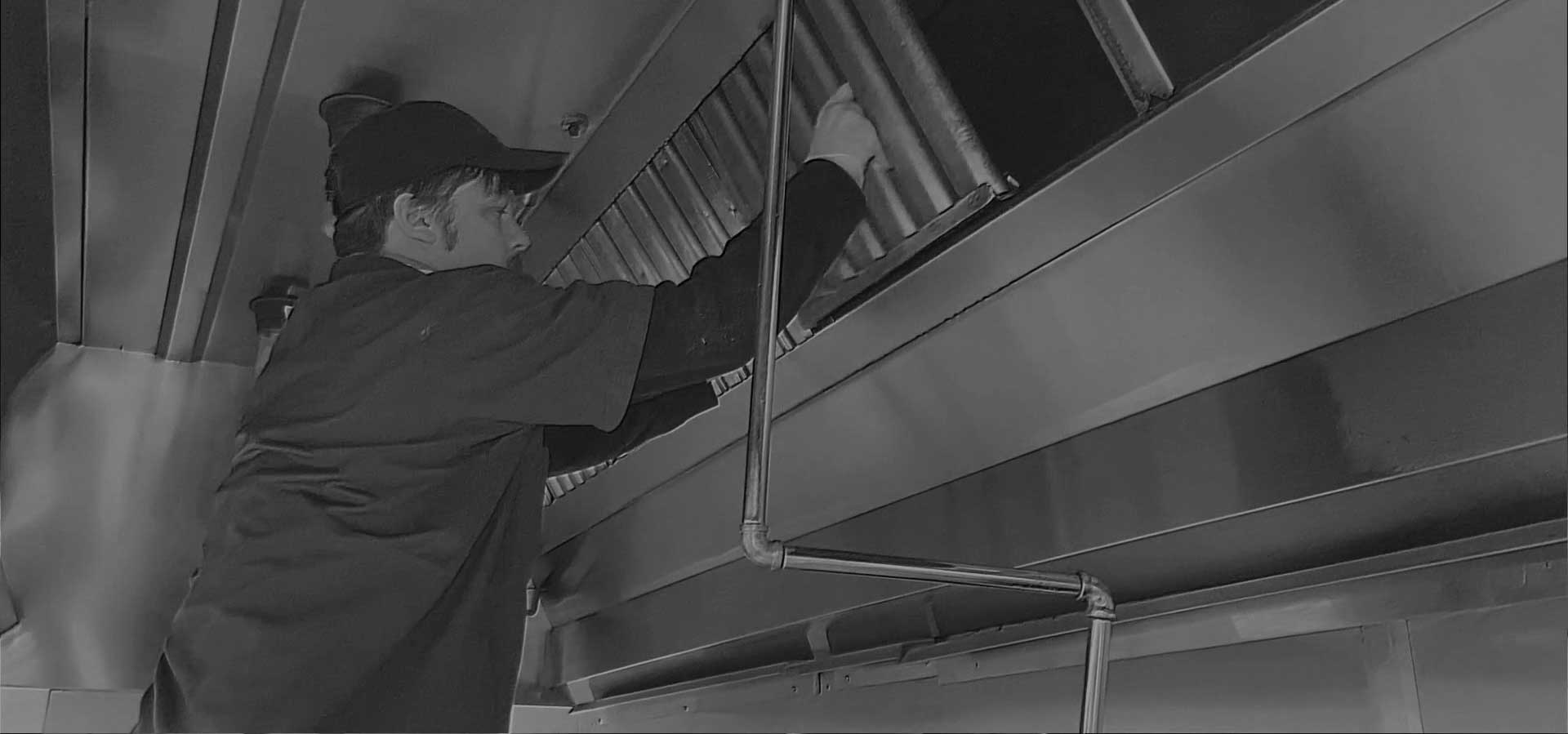Of the fires studied by the NFPA, more than 59 percent started in the kitchen, a fact that underscores how important understanding and implementing these best practices for fire safety really are. We will describe several fire safety best practices in three primary areas – preventative maintenance, good housekeeping, and employee training – These practices together can help significantly reduce the risk of fire in your kitchen.
Best Practices for Preventative Maintenance
Preventative maintenance plays an important role in kitchen fire prevention. Below we describe the best practices for fire safety related to preventative maintenance with your Kitchen Exhaust and Fire Suppression Systems.
Mintaining Your Kitchen Exhaust System
Hood Boss is committed to overall safety and providing our clients with the highest standard of cleaning. Not only do we clean your system to “bare metal,” we provide you detailed before and after pictures of your system after each service.
- Have your kitchen’s exhaust system regularly inspected and cleaned to prevent grease build-up. This is not only a best practice – it is required by fire safety codes. The NFPA 96, Standard for Ventilation Control and Fire Protection of Commercial Cooking Operations, requires different inspections and cleaning schedules for exhaust systems – monthly, quarterly, semi-annually, or annually – based on the type of cooking operation you have.
Maintaining Kitchen Fire Suppression Systems and Equipment
Best practices for fire safety where commercial kitchens are concerned means staying in compliance with all fire safety regulations regarding the inspection, testing, and maintenance of your kitchen fire suppression system.
- Keep portable fire extinguishers as a backup. Portable fire extinguishers are required in both the NFPA 96 and the NFPA 10 Standard for Portable Fire Extinguishers. While Class K fire extinguishers are required in commercial kitchens for fires involving grease, fats, and oils that burn at high temperatures, it is also a good idea to keep Class ABC extinguishers on hand for other types of fires (paper, wood, plastic, electrical, etc.) All fire extinguishers should be checked monthly and inspected and recertified annually.
- Inspect and test your kitchen fire suppression system. Kitchen suppression systems are generally very effective at extinguishing fires. However, they can still fail due to a lack of maintenance. This is why it is critical to have them inspected and tested regularly.
Best Practices for Good Housekeeping
Cleanliness and good housekeeping can significantly reduce the risk of fires in commercial kitchens. This fact is evident in the NFPA data which showed that 22 percent of the fires that occur each year in commercial kitchens were a result of a failure to clean.
- Clean your kitchen regularly. This is one of the simplest but most important best practices you can implement in your kitchen. Built-up grease can be ignited with a single spark and is a fire hazard that can be prevented with good housekeeping. Staff should regularly clean to remove the grease on walls, work surfaces, ranges, fryers, broilers, grills and convection ovens, and all vents and filters. Grease traps must also be cleaned regularly to prevent them from overflowing and reduce the risk of fire. Use checklists to ensure daily, weekly, and monthly cleaning activities are completed.
Make Staff Training a Priority
Depending on how much fire safety and prevention training you provide, your employees can either increase your risk of fire or be one of your best lines of defense in preventing it. In addition, if a fire does break out, it will be your staff that must quickly take control of the situation and lead your customers to safety. Their success will depend in large part on the training they have received – investing in your employees could not only reduce your risk of fire but also save lives should one ever break out in your kitchen.
- Make sure your staff has proper equipment and training in any cooking techniques that involve the use of open flames. Methods that use alcohol and propane are particularly hazardous when used near dining tables where mistakes could result in the ignition of tablecloths, napkins, and possibly the clothing of servers and customers.
- All equipment and appliances should be used according to the manufacturer’s instructions. Two percent of the fire’s studied in the NFPA report were caused by equipment that was not operated properly.
- Teach employees how to quickly extinguish grease fires on cooktops and grills. Data from the U.S. Fire Administration show that most fires (almost 70%) can be contained and do not spread beyond the object of their origin such as a grill or cooktop. Teaching your employees how to quickly deal with small fires can greatly reduce the risk of those fires getting out of control. It is also important that they understand that grabbing the closest fire extinguisher isn’t always the right response to a grease fire. Often, small grease fires can be extinguished by covering the flames with a metal lid and turning off the heat source.
- Make sure every employee knows how to properly use fire extinguishers. The NFPA 96 requires kitchen staff to be trained on how to operate fire extinguishers and fire suppression systems. They should also know that Class K fire extinguishers are only intended to be used after the activation of a kitchen suppression system.
- Provide and mandate emergency training. Teach new employees about evacuation procedures and provide refreshers to all staff members at least annually. Every employee should know where the closest exits are, and back up the training you provide with regular fire drills.
Have a Fire Safety Plan in Place
Even if you implement every one of the best practices described here, your commercial kitchen should still have an evacuation plan – one that is easy to read and understand and posted at every egress point. Every shift should have a staff member designated to be the evacuation manager, who in the event of an emergency, will be in charge of calling 911 and ensuring that everyone exits the building safely.
